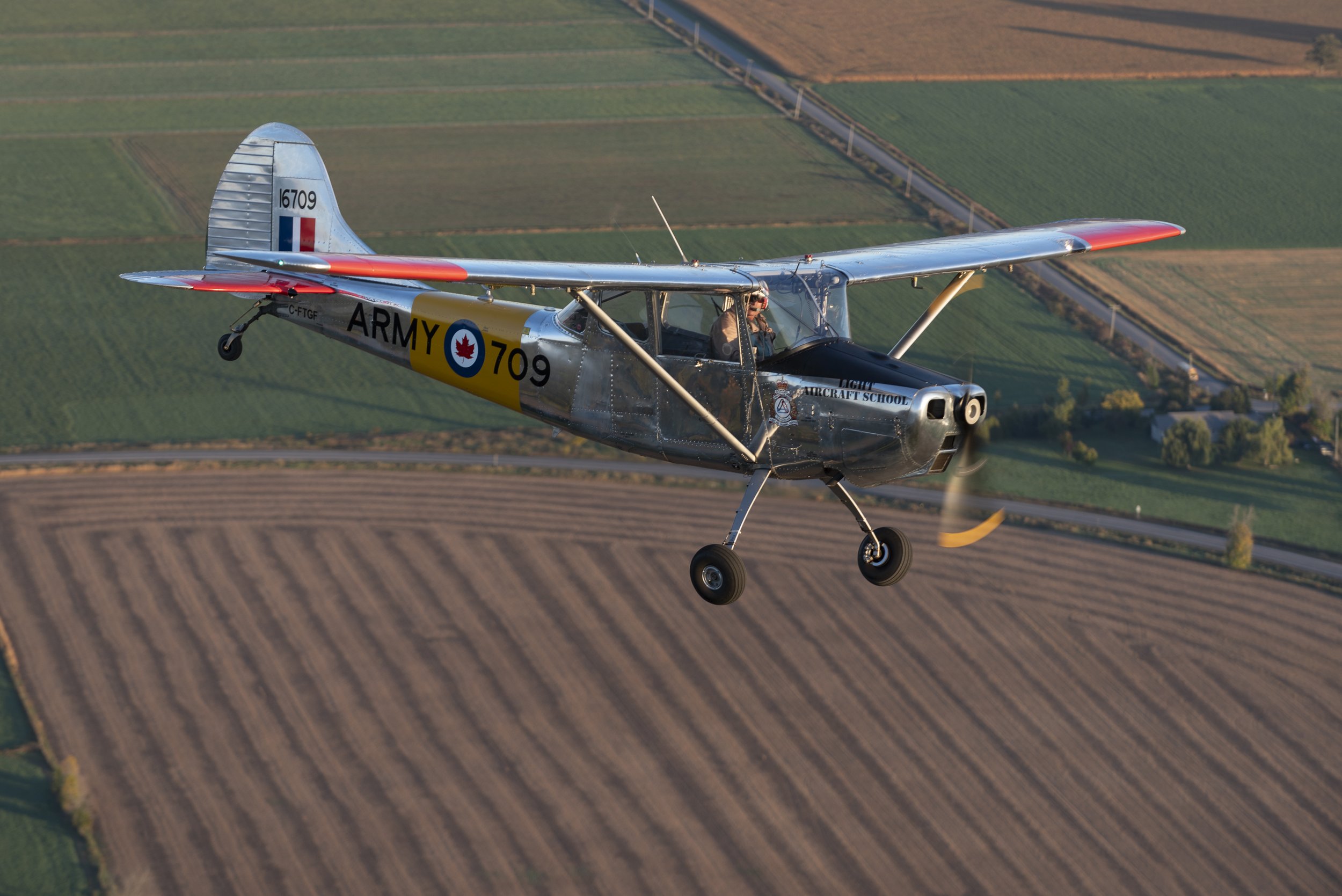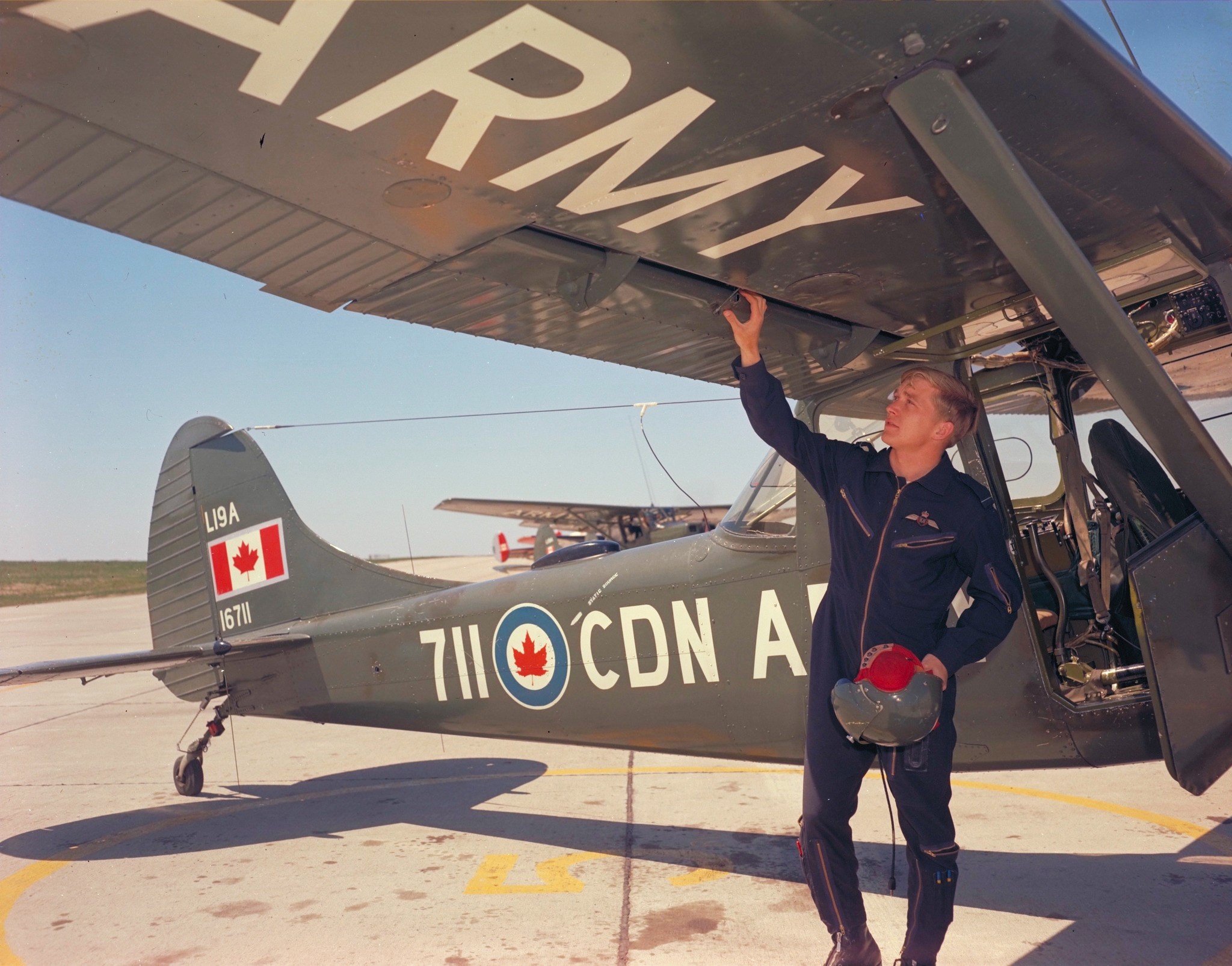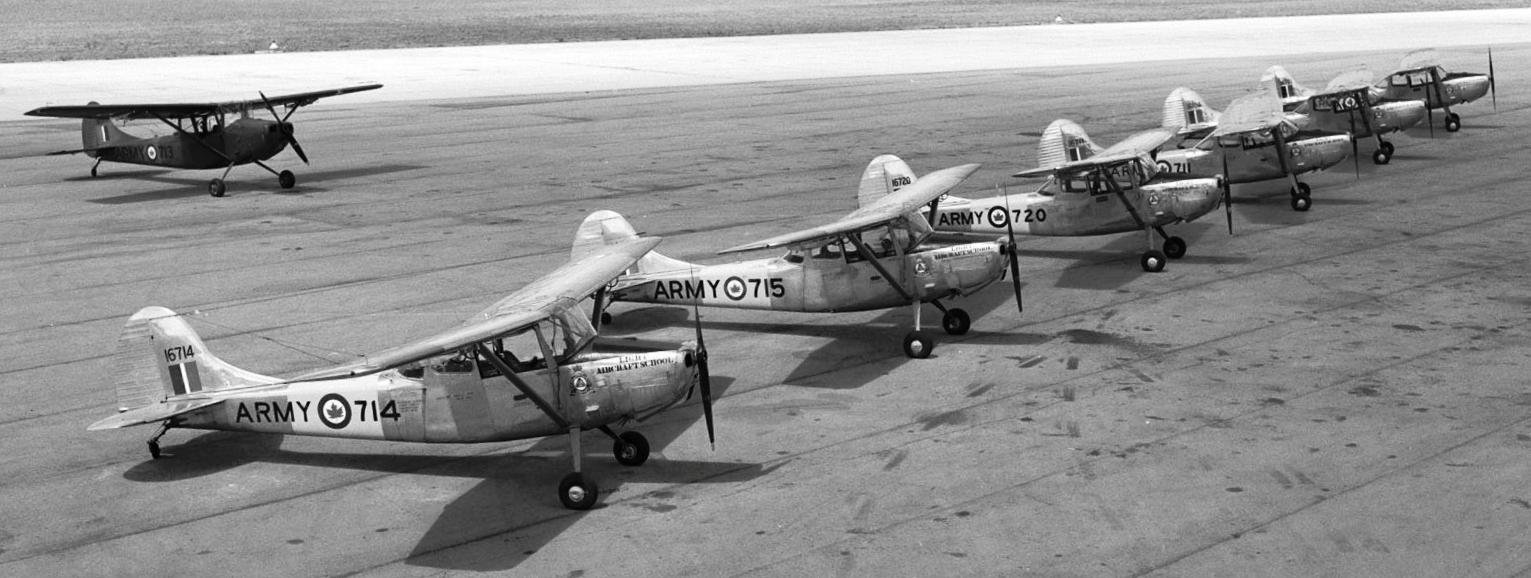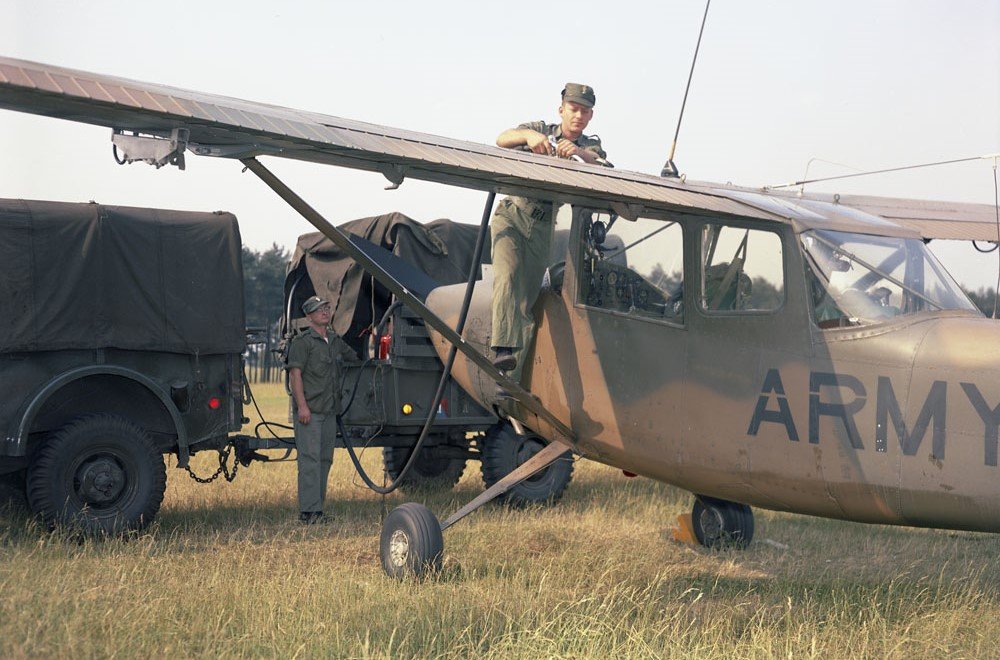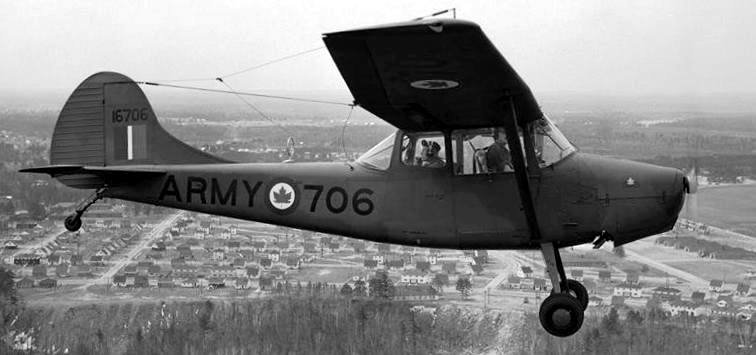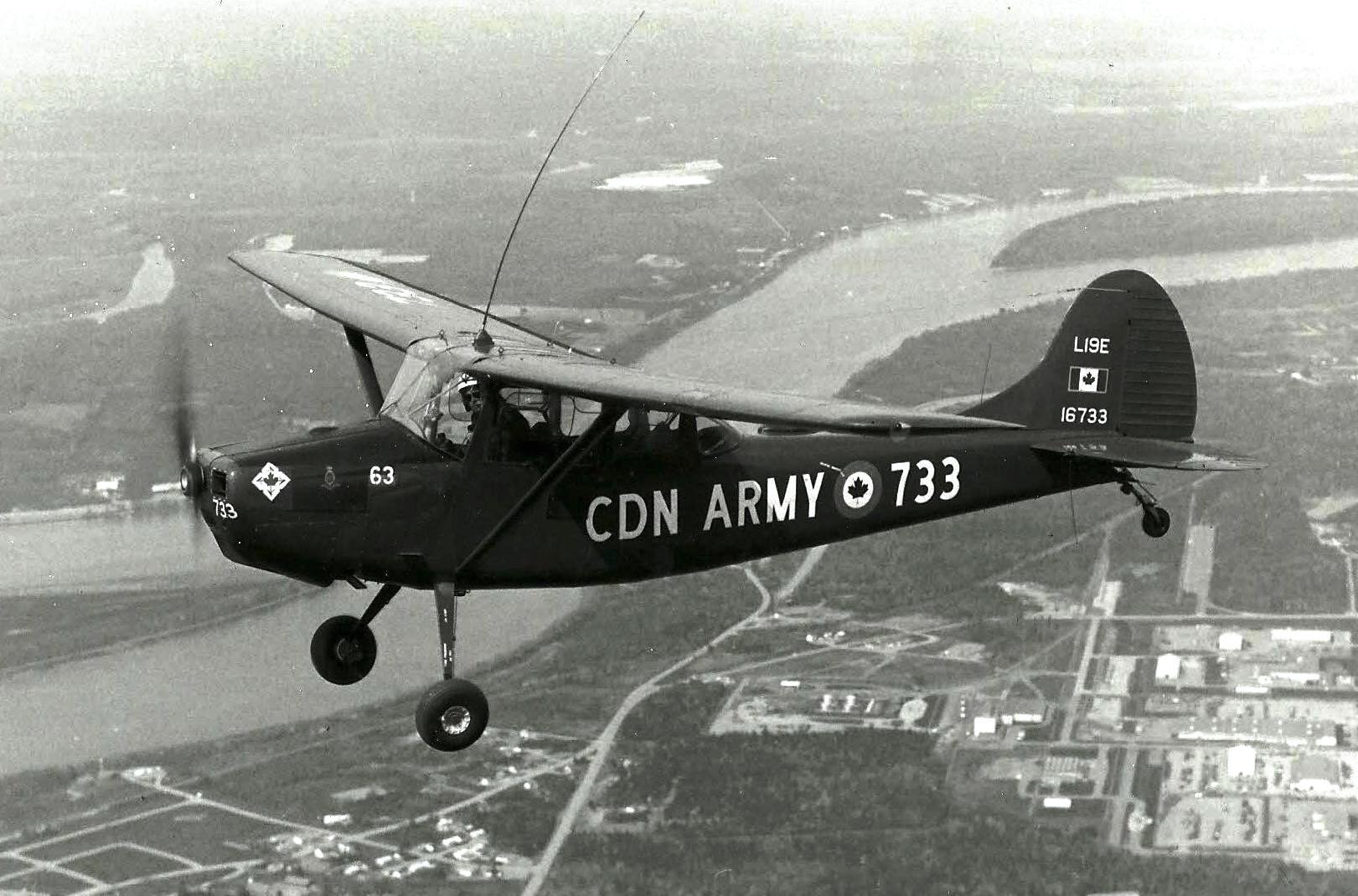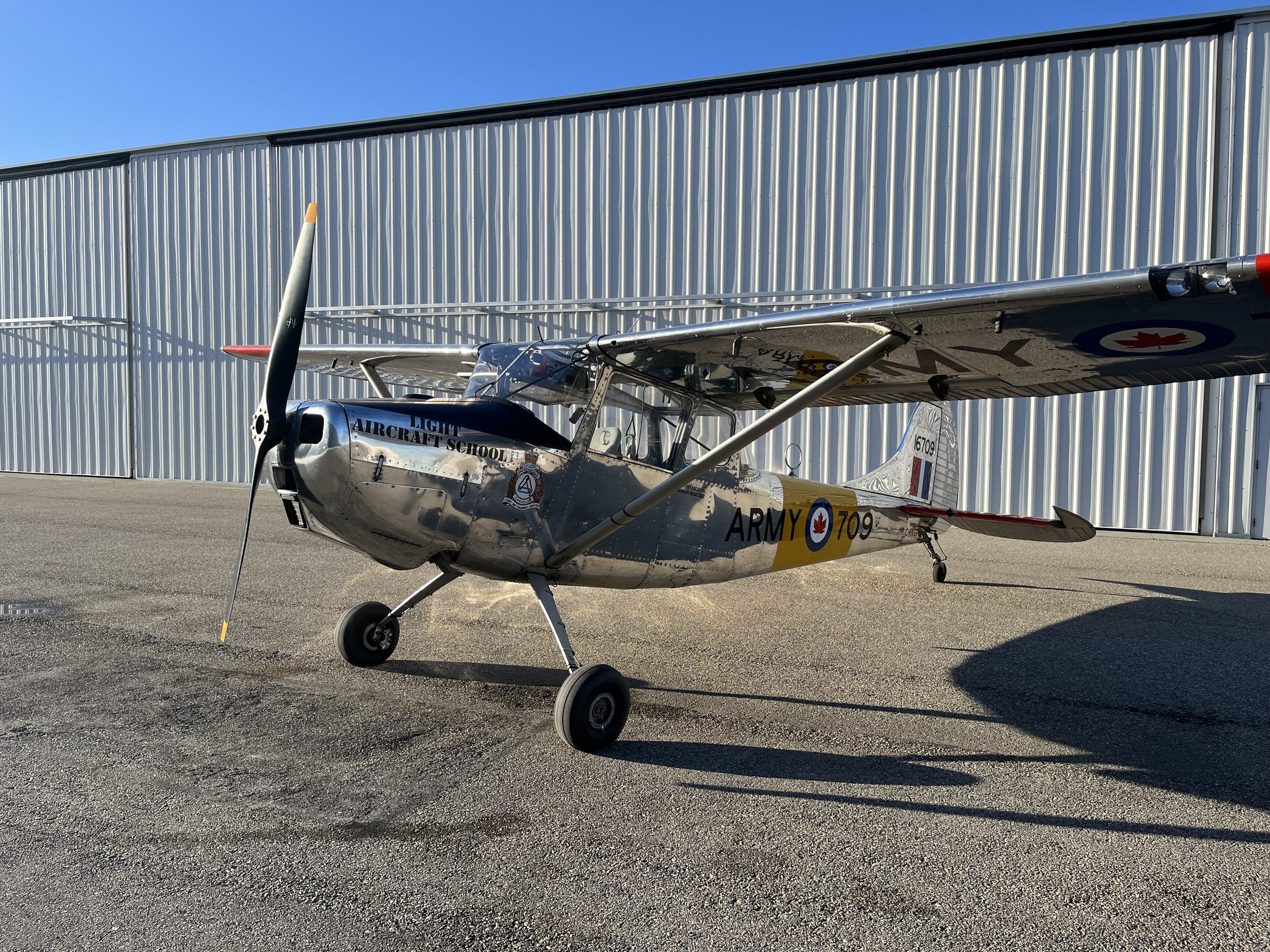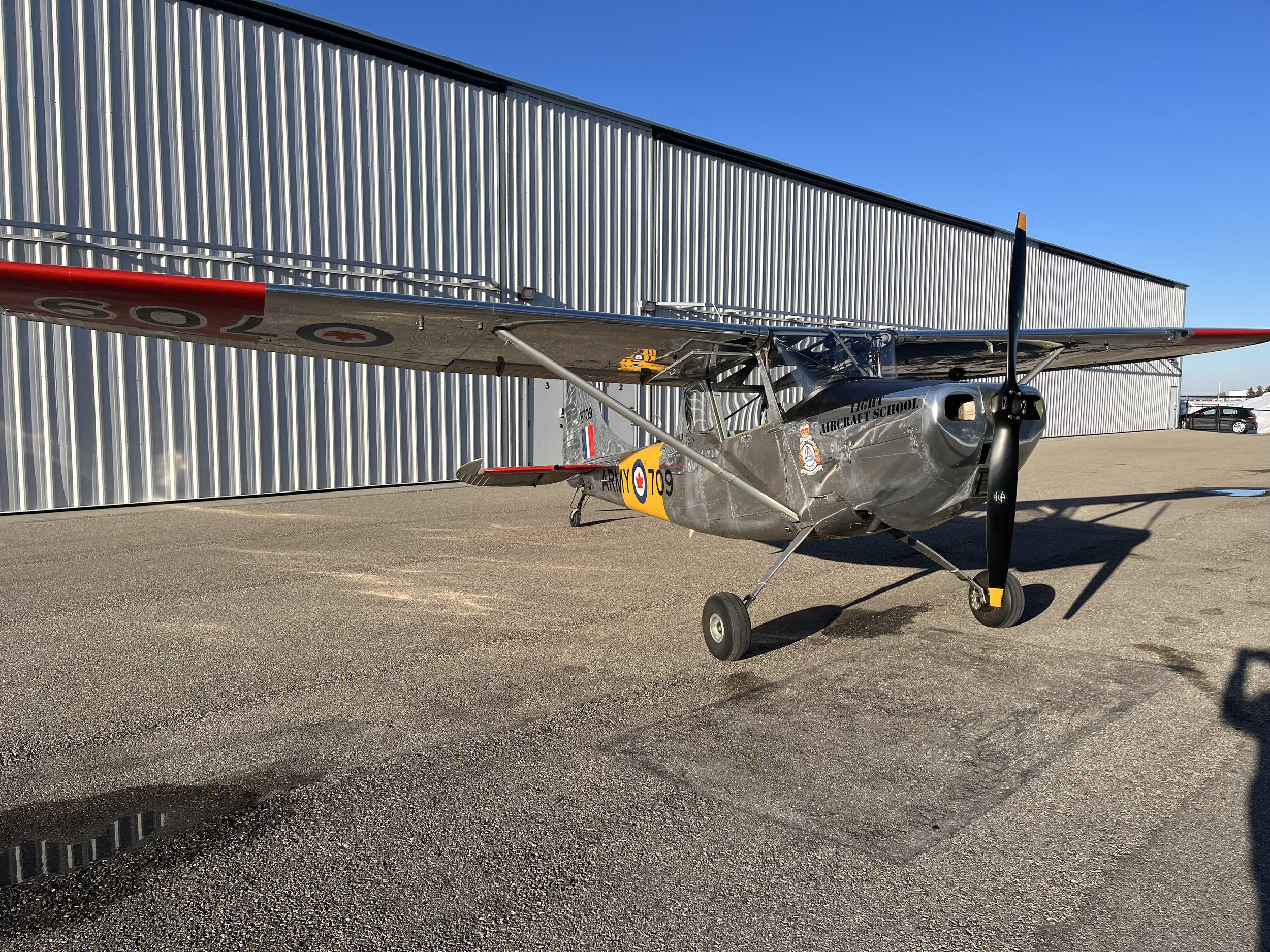
CESSNA L-19A BIRD DOG
PETER HANDLEY PHOTO
VINTAGE WINGS OF CANADA COLLECTION
Cessna L-19A Bird Dog
Bat One’s callsign was chosen by the Wing Commander at 1 Wing, Kingston, the home of Canada’s tactical aviation capability. At the centre of the 1 Wing unit crest is the image of a Bat, symbolic of an agile hunter at night or in day light. The term “Bat” is used for all One Wing HQ callsigns followed by the flight’s numerical designator — with Bat One reserved for our L-19A.
The L-19 Bird Dog, designed by Cessna, was built for the US Army as a light observation aircraft with deliveries starting in 1950. In Canadian Army service, the L-19 was used as a spotter plane for artillery targeting as well as other duties. Twenty-nine Cessna L-19s were acquired by the Canadian Army as artillery spotters and general liaison aircraft. They were used to observe and direct the accuracy of the Army’s artillery fall. In Canada, the Royal Canadian Air Cadets used former CAF L-19 aircraft equipped with a rig to tow Schweizer gliders for the Air Cadet gliding program.
Bat One ws originally built as US Army 53-8058. It was delivered to storage at RCAF Station Lincoln Park, Alberta and at various times operated by Canadian Joint Air Training Centre (CJATC) at Rivers, Manitoba, Light Aircraft School at Rivers, Army Aviation Tactical Training School (AATTS of CJATC), Training Command at RCAF Station Centralia, Ontario, 3rd Regiment Royal Canadian Horse Artillery at Camp Shilo, Manitoba, Canadian Forces Navigational School at CFB Winnipeg, then on to No. 4 Flying Training School (FTS) at Rivers.
In Canadian Army service its serial number was L-19A 16709. At No. 4 Flying Training School at CFB Rivers, it was renumbered to 119709. Following brief storage at CFB Saskatoon, it then went to No. 3 Canadian Forces Flying Training School and then was made available for disposal and sold to Air Cadet League of Canada, becaming CF-TGF, later C-FTGF. It served with the Air Cadet League’s British Columbia Branch at Comox.
Following a training accident in 2010, the air frame was sold to G. Reynolds of Sechelt, BC, who restored it and then sold it to to Jayson Iverarity of Calgary. It was puchased by Vintage Wings of Canada in the summer of 2024.
Photo: Mike Virr
The Bat One Cessna L-19A celebrates the history of Canadian tactical aviation. Seen here with two Chinook helicopters at Canadian Forces Base Petawawa
Bat One at Arnprior prior to dawn photoshoot with Fairchild Cornell. Photo: Peter Handley
Photo: Peter Handley
LCol John Dicker took this photo while he was attending his Light Aircraft Pilot Course at AATTS CJATC Jan-Apr 63. 709 was parked on the tarmac along with several other L-19s on strength CJATC at the time. The coloured band on the fuselage at that time was red as opposed to yellow. It changed over the years.
The snowy ramp at Rivers, Manitoba in 1967. The third aircraft from the right is 709. In the foreground is a Cessna L-182. Photo via Sentinel Magazine and MilitaryBruce.com
Photo of L-19A (119709/C-FTGF) when it was operated by the Royal Canadian Air Cadets as a glider tug in British Columbia. Photo via Aviation Education Wing, Hong Kong Air Cadet
Earlier Paint scheme for C-FTGF in its empty with the British Columbia Air Cadets. Photo likely from 80s or 90s.
C-FTGF tied and tapped at Abbotsford in 2007. Photo by Peter Unmuth
C-FTGF at Nanaimo, BC in 2007 in a new paint scheme. Tim Martin photo via AerialVisuals
C-FTGF at Comox in the early 2000s with other Cadet League glider tugs on the ramp.
C-FTGF after it flipped on its back in Comox in 2010. It was sold into private hands following the accident and restored to its present configuration.
C-FTGF after it flipped on its back in Comox in 2010. It was sold into private hands following the accident and restored to its present configuration.
Photo: Peter Handley
Photo: Peter Handley
Bat One at Vulcan, Alberta prior to cross-country flight to Arnprior. Photo via Todd Lemieux
Photo: Peter Handley
Photo: Peter Handley
Photo: Peter Handley
Photo: Peter Handley
Photo: Peter Handley
Cessna L-19A Bird Dog (Serial No. 16711), Rivers, Manitoba. Pilot (Student) Lt. Dave Rowlandson, checks flap of his L-19 A aircraft during pre-flight check. Note everything around him is green, including his helmet, but he is wearing RCAF wings. Image via Mike Kaehler and text via Harold Skaarup, Silverhawkauthor.com
Cessna Bird Dogs of the Canadian Army, likely at Rivers, Manitoba DND Photo via James Craik
Cessna L-19 (later model E) Bird Dogs (Serial No. 16733), and (Serial No. 16724) Canadian Army, possibly CFB Gagetown, New Brunswick. Image: (DND Photo PCN 67-1075) via Harold Skaarup, silverhawkauthor.com
Cessna L-19 (later Model E) Bird Dog spotter aircraft, Canadian Army with 4 Canadian Mechanized Brigade Group, Germany, 1964. (Library and Archives Canada Photo, MIKAN No. 4235776)
Cessna L-19A Bird Dog (Serial No. 16706), Canadian Army, ca 1970s. DND image via Mike Kaehler
Cessna L-19 Bird Dog (Serial No. 16733), Canadian Army, Royal Canadian Artillery Spotter Plane in flight over Oromocto, New Brunswick, July 1973. Photo via Shearwater Aviation Museum https://shearwateraviationmuseum.ca
Cessna L-19E Bird Dog (Serial No. 16717), Canadian Army, Royal Canadian Artillery Spotter Plane. Photo via Shearwater Aviation Museum https://shearwateraviationmuseum.ca
Photo: Hangar57.com
Aircraft Record Card — It's been 70 years since L-10A 16709 (later 119709) was taken on strength with the Canadian Army






















